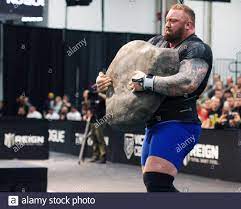What is a Functional Movement?
by Erik Castiglione
In my last gym, if you were caught doing biceps curls, you got kicked out of the gym. Why? Because they weren’t deemed “functional.” CrossFit is defined as “constantly varied functional movements executed at high intensity.” But what does functional actually mean?
According to CrossFit for a movement to be functional, it needs to meet the following criteria:
1. It’s a multi-joint (compound) movement
2. It’s initiated with a core to extremity muscular contraction
3. It’s natural (i.e. occurs in your every day life, not just in an artificial gym setting)
4. It’s capable of moving large loads over long distances quickly
5. It’s safe at greater than 1 rep max loads (eg when a deadlift bar is too heavy, you simply can’t move it)
6. It elicits a high neuro-endocrine response (you can ignore this one)
A biceps curl is often considered to be a single joint, or isolation movement. Rather than bore you with the anatomy of the biceps muscles and the nerves that activate them, suffice it to say they start in the shoulder and end in the forearm. This means the biceps cross 2 joints. The nerve that activates it receives its signal from the spine, making it a core to extremity contraction. And, I could argue that a biceps curl meets AT LEAST 4 out of 6 of the criteria. But most importantly, the argument that a biceps curl is not naturally occurring is just plain wrong.
Think back to when you first started training. Did you have an easier time performing chin-ups (underhand grip) or pull-ups (overhand grip)? For the vast majority of people, it’s easier to perform a chin-up. This is because the chin-up is a little more biceps dominant than the pull-up, which uses a little more of your upper back. Most untrained people are perfectly comfortable activating their biceps, and don’t know how to activate their upper back muscles. Why? Because we use our biceps in our everyday lives. Ever carry a box? A child? Moved a couch? There are countless examples of holding something in front of you and moving it. In a lot of these positions, your arms are flexed, meaning you have an isometric (not moving in space) contraction of the biceps. The biceps curl trains this. Therefore, to argue that a biceps curl isn’t functional, but a wall ball is, is just bogus. And while we’re on the subject, when was the last time you did a kipping handstand push-up or comparable movement outside of the gym?
To expand on my point, in our programming, we have 3-4 strength only days per month, where we perform a main lift and then a few accessory lifts. Many of these accessory lifts would not be deemed “functional” by CrossFit’s definition. Yet they are essential for correcting muscle imbalances and fixing the weak points we have in our lifts – our “functional” movements. If these movements improve functional movements, don’t they too serve a function?
Rather than bore you with elaborate arguments and examples on the subject, let’s get to the crux of this article. Here it is: EVERY movement has a specific function. Creating arbitrary reasons to dismiss a movement just shows a lack of understanding of that movement. The kipping pull-up gets a lot of hate outside the CrossFit world, but it too serves a function. At the end of the day, all movements are tools, and we need to pick the right ones to achieve our goals. When we view movement in this framework, we can see value in all of them. See you in the gym.

